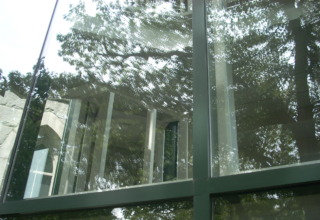
Development Unfolds through Working with Vertical Threads
What is the relationship between depth and development? Development is never a linear process. Typically, there are several concurrent and overlapping threads of unfoldment that are active at a given point in life. There are two kinds of threads:
Horizontal or historical threads – A pattern of reoccurring challenges that are woven throughout the life history of the client starting in childhood and are revisited from time to time in adulthood. Often these are threads of self-care, money, career, intimacy, family, friendship, community and belonging, values, ethics, purpose and meaning, and threads of identity and reality, which ultimately touch on spirituality. Naturally, we tend to recognize horizontal threads in the presenting issues that clients bring to coaching.
Vertical threads – A pattern formed as a cross-section of the Four Depths where a constellation of Parts, at the Depth of Parts, is attempting to over-compensate for the assumed absence of a particular quality of presence, at the Depth of Presence or a particular Nondual quality, at the Depth of Nonduality. These qualities are assumed absent because these depths only exist in the background for the client where they remain unaware of the resources they contain.
Horizontal and vertical threads are woven together. Clients continue to suffer from a history of reoccurring struggles – a horizontal thread – because the vertical depth work required to resolve it remains incomplete or entirely unaddressed. Until the client can drop into the Depth of Presence and recover the lost sense of their innate wholeness as a particular quality of presence, a constellation of parts will continue to try to over-compensate for that loss. Ironically, the history of struggles the client suffers is often a negative unintended side-effect of this compensatory strategy. Therefore, until the client recovers the sense and embodiment of their actual resourcefulness as presence, parts of them will continue to try to over-compensate for that loss and continue to re-create and repeat their history of struggling.
In my view, the primary job of the developmental coach is to help the client locate and complete the vertical depth work implied by the pattern of reoccurring struggles they experience throughout their life. This occurs naturally in Aletheia Coaching as the coach and client practice Parts Work, Process Work, Presence Work, and Nondual Work. Enduring transformations unfold through the reactivation of past emotional learnings, in the form of constellations of parts, the generation of experiential mismatches, and the creation of new learnings through accessing deeper depths where innate resourcefulness, creativity, and adaptive brilliance can be integrated and embodied. As the client deepens their self-contact, unconcealing and embodying various qualities of presence, they develop both psychologically and spiritually. As a general pattern, as clients develop, they consciously inhabit and embody more and more of their depth.
Download Article













